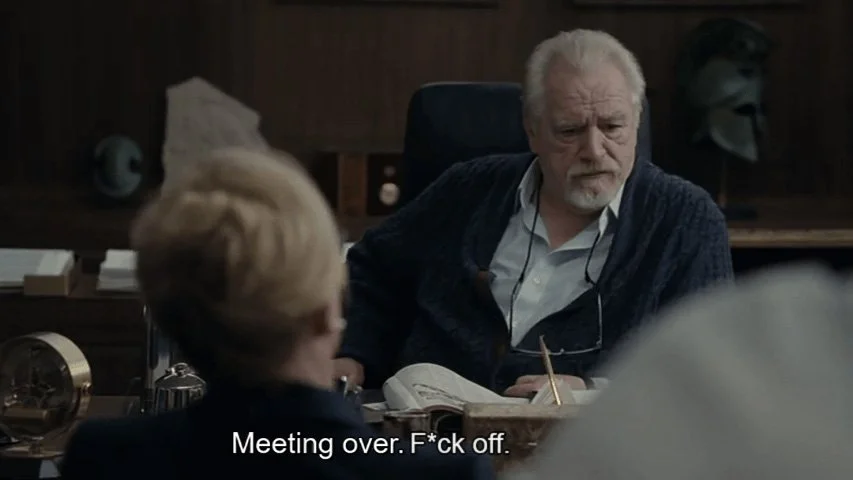What ‘Succession’ can teach us about mergers and SFTs (yes, really)
So, you’re handling a successor fund transfer (SFT) – that delightful moment when you’re moving a bunch of people’s retirement savings from one fund to another. Or maybe you’re looking down the barrel of a merger.
It's complicated, it's sensitive, and frankly, it’s the stuff that makes members consider jumping ship if you don't get it right. Lucky for you, we’ve got some unexpected help to offer from TV’s messiest business family: the Roys from Succession.
Sure, they’re dysfunctional. And yes, they’ve broken every business ethics rule in the book. But their boardroom tactics actually shed some light on what not to do (and a few things to do) when you’re steering members through a big change.
Let’s take a Roy family crash course in SFT and merger survival – minus the lawsuits and backstabbing.
1. Trust isn’t a given – you’ve got to earn it
The Roy family would rather chew broken glass than trust each other – and honestly, that’s fair. But mergers and SFTs require a different approach. Just because members’ funds are getting a shiny new home doesn’t mean they’re immediately on board with the move.
Like Logan coaxing the shareholders, you need to build trust from the ground up. Talk to your members like real people: explain the transfer, lay out the benefits, and – unlike the Roys – be clear and honest.
Imagine if Kendall had been more transparent about his intentions when he tried to stage a hostile takeover of Waystar Royco. Would it have gone smoother? Probably not – but for you, transparency does make a difference. The more you keep members in the dark, the faster they’ll look for the exit.
Takeaway: Communicate clearly and openly. Lay out the reasons for the change and what’s in it for them.
2. Have a Shiv on your team – someone who advocates for the people
In the Roy family, Shiv is the one who occasionally tries to put the “human” in human resources – when it serves her agenda, of course. For your merger or SFT, having a Shiv-like figure in your project team should be a non-negotiable. Not to backstab, but to be the voice of the member. This person will ensure every decision made in the planning stages considers the member experience. Think of them as the advocate saying, “Hey, how will this impact the members?” before it’s too late.
We’re talking about someone who champions proper research, digs into member insights, and doesn’t let you forget who’s ultimately affected by the transfer. They’re your in-house advocate for experience design, like Shiv trying (and often failing) to get the Roys to consider the human side of their ruthless schemes.
Takeaway: Embed a “member advocate” in your project team to challenge assumptions and put the member experience front and centre.
3. It’s not just business – it’s personal
The Roys might say it’s “just business,” but anyone who’s seen the show knows it’s always personal. And guess what? For your members, superannuation is personal, too. They’re trusting you with their future, their nest egg, their literal comfort in retirement. So, if you’re treating an SFT like just another transformation project, you’re missing the point.
Remember when Logan demanded loyalty from his kids but gave them nothing in return? That’s a cautionary tale. Show members you actually care about their experience. Even a simple acknowledgment – “We know change is unsettling, but we’re here to make it as smooth as possible” – goes a long way. Be human. Be empathetic. Don’t be Logan Roy.
Takeaway: Show you’re invested in their financial future. Empathy and personalisation are key – make members feel valued, not like they’re just part of the bottom line.
4. Plan, but expect a Tom-level twist (and be ready to pivot)
Plan your SFT to perfection – have timelines, contingencies, checklists, the works – but be ready for a Tom-style curveball. Whether it’s a tech outage, a rush of panicked member inquiries, or just something you didn’t see coming, you need to stay nimble. Adapt, pivot, and keep your wits about you when things go sideways.
Picture Tom’s “I’m going to prison” meltdown – that’s how you’ll feel if you don’t build flexibility into your process. Make sure you can adapt at a moment’s notice to handle the unexpected. Because, unlike Tom, you can’t afford a full-blown existential crisis when things get rocky.
Takeaway: Be prepared for chaos. Stay adaptable and keep a plan B (and maybe a plan C) in your back pocket.
5. Member retention is the name of the game – don’t be a Connor
Poor Connor Roy – the guy just wants to be loved. But he’s so far removed from reality that no one takes him seriously. Don’t let your members feel like Connor during an SFT – disconnected, overlooked, and ready to “run for president” (or, in this case, leave your fund entirely).
After an SFT, it’s tempting to move on and let the dust settle. But this is the moment to turn up the charm. Members are evaluating whether sticking around is worth it. Remind them of the benefits, highlight new features, and let them know how much you value them. And, unlike Logan with Connor (the real #1 boy!), show them they actually matter.
Takeaway: Don’t leave members hanging post-transfer. Engage them with benefits and perks that make staying worth their while. Give them a clear reason to stay that isn’t just “because it’s easy.”
6. Channel your inner Gerri – be strategic, steady, and always one step ahead
Gerri for CEO! In the land of Waystar Royco, Gerri Kellman is the voice of reason – the sharp, no-nonsense strategist who manages to steer the Roy ship without breaking a sweat (mostly). In an SFT, you need to be like Gerri of your fund. Scrambling is not on brand for her. She’s all about anticipating risks, managing expectations, and making sure everyone’s on the same page, even when chaos looms, for the better good (much to Roman’s dismay. But let’s not go into the whole Roman thing #slimepuppy).
For your merger or SFT, that means having a rock-solid transition plan and proactively identifying potential pain points for members before they happen. Gerri would already have a game plan for every “what if” scenario and a clear roadmap for every single step of the transfer.
Takeaway: So, take a page from her book – be strategic, stay steady, and communicate like a pro. Make sure your members know you’re prepared and have their best interests in mind – and that there’s a smart, steady hand guiding this ship to calmer waters.
Final thoughts
Be transparent, plan like Tom thinks he does, and never – ever – forget your members. Think like Shiv – put the people first. Communicate like Logan should have – honestly and clearly. Be the strong leader that Connor wishes he was. And for the love of all that’s good, don’t ever let things go full Kendall.







